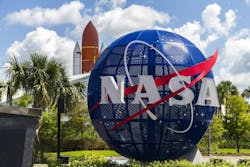NASA to test rad-tolerant computing solution for space
BOZEMAN, Mont. - Onboard computers are critical to space exploration, aiding nearly every spacecraft function from propulsion and navigation systems to life support technology, science data retrieval and analysis, communications, and reentry.
But computers in space are susceptible to ionizing solar and cosmic radiation. Just one high-energy particle can trigger a so-called “single event effect,” causing minor data errors that lead to cascading malfunctions, system crashes, and permanent damage. NASA has long sought cost-effective solutions to mitigate radiation effects on computers to ensure mission safety and success, Beth Ridgeway writes for NASA. Continue reading original article.
The Military & Aerospace Electronics take:
10 January 2025 - Computers in space face ionizing radiation that can cause data errors, system crashes, or permanent damage. To address this, the National Aeronautics and Space Administration (NASA) is testing Radiation Tolerant Computer (RadPC) technology, developed by Montana State University, as part of its CLPS initiative. RadPC, set to fly aboard Firefly Aerospace’s Blue Ghost 1 lunar lander, is designed to recover from radiation-induced faults using redundant processors on off-the-shelf field-programmable gate arrays (FPGAs). These logic blocks can be repaired in real-time following a radiation strike, with patented procedures identifying and fixing faults in the background.
RadPC includes three dosimeters to measure varying radiation levels, studying interactions between Earth’s magnetosphere and solar wind during transit to the Moon and providing radiation data at Mare Crisium, Blue Ghost’s landing site. This information could enhance safety for future Artemis missions.
Jamie Whitney, Senior Editor
Military + Aerospace Electronics
